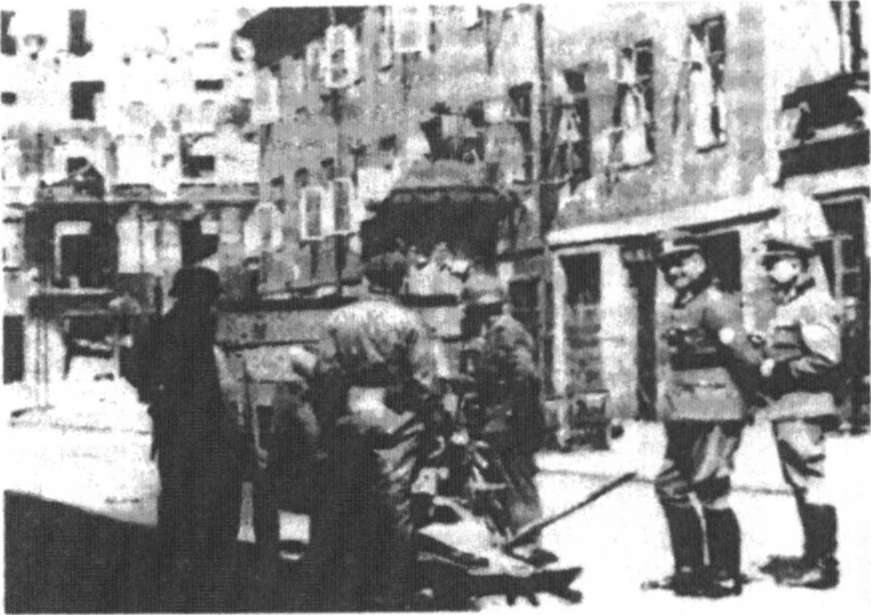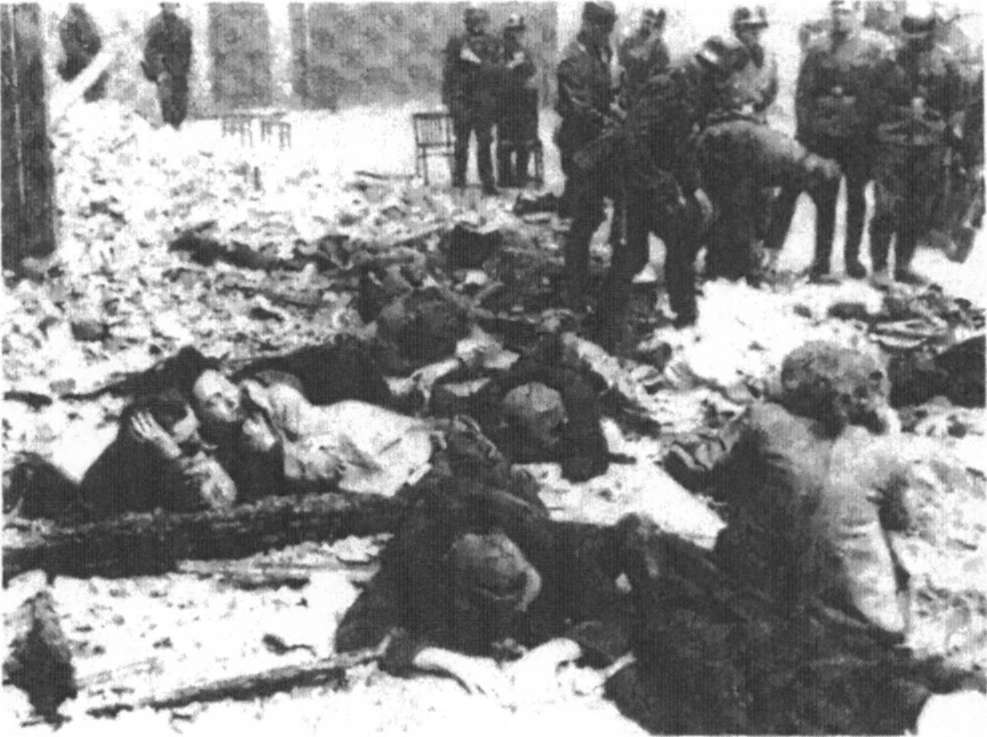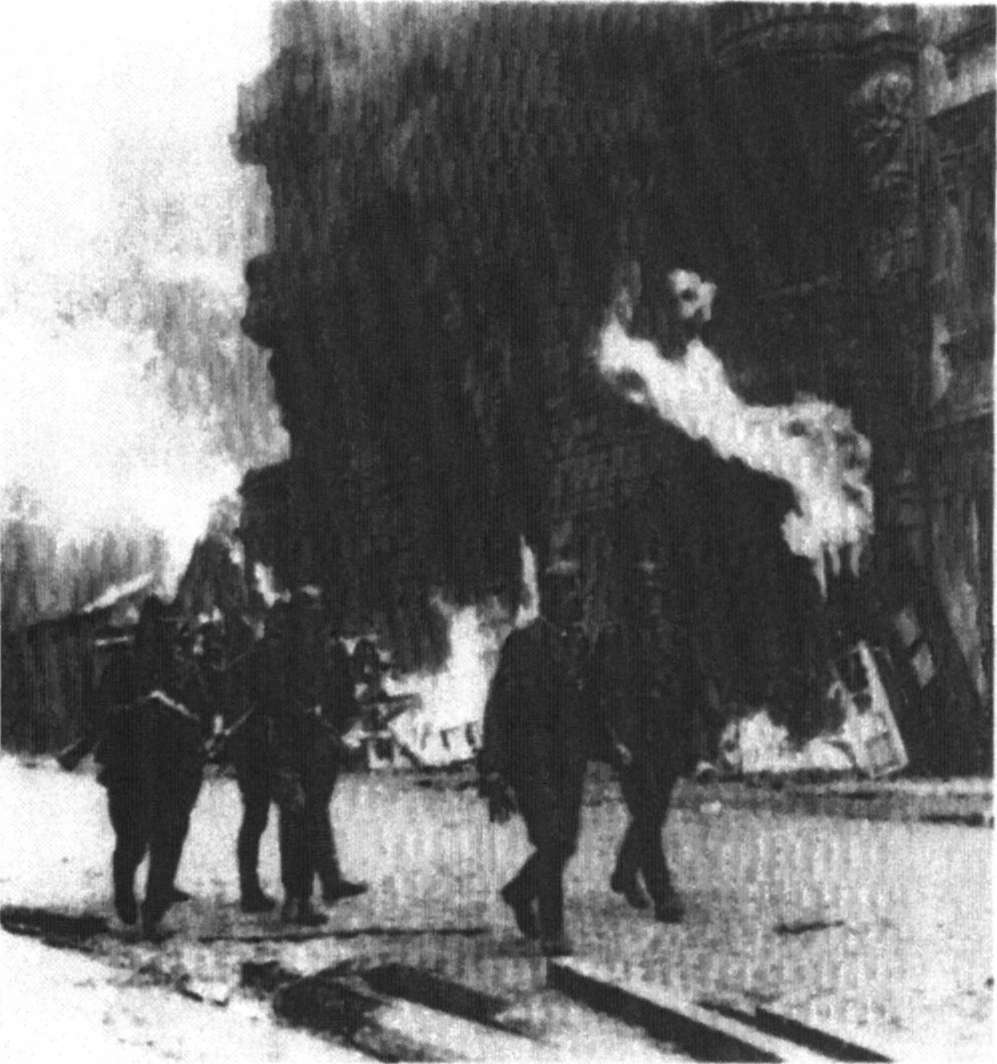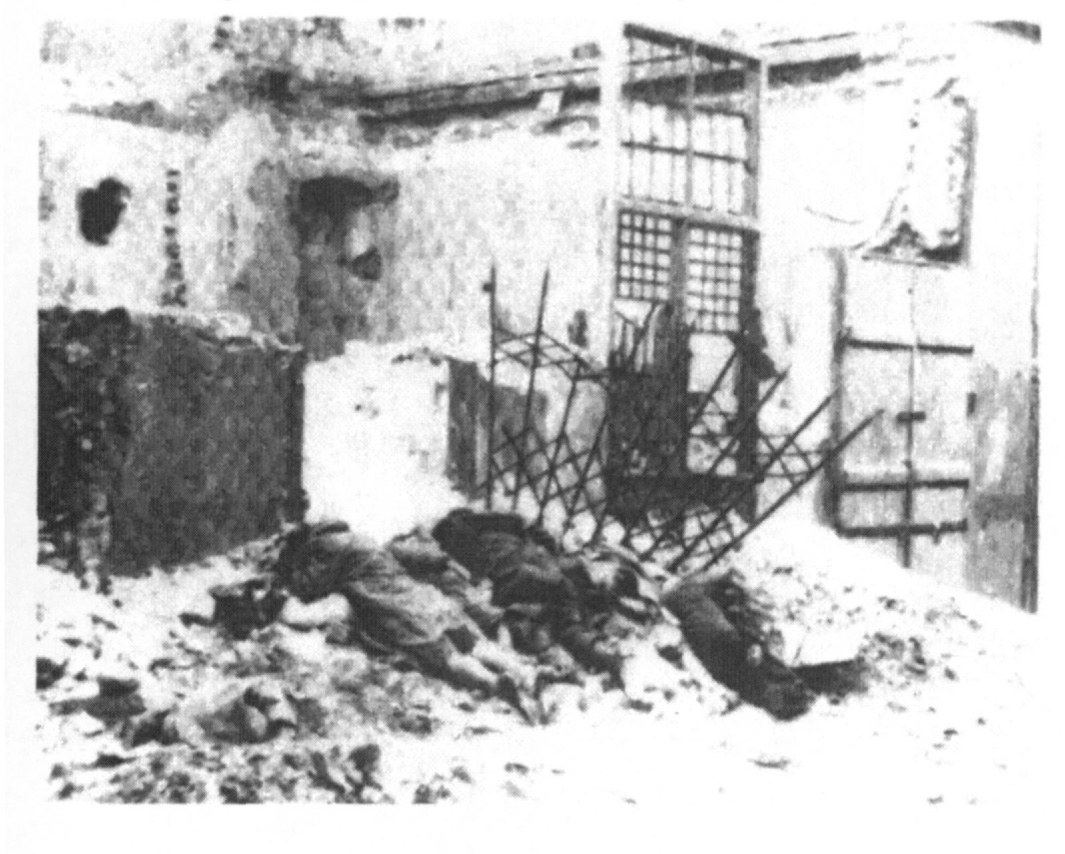Resistance (37 page)
Authors: Israel Gutman

Â

Â

(Stroop Report.
National Archives. Washington, D.C.)
Â

(Stroop Report,
National Archives, Washington, D.C.)
Â

(Stroop Report.
National Archives, Washington, D.C.)
Â

Â

Â
Â
Someone will read as moral
that the people of Rome or Warsaw
haggle, laugh, make love
as they pass by martyrs' pyres.
Someone else will read
of the passing of things human,
of the oblivion
born before the flames have died.
Â
But that day I thought only
of the loneliness of the dying,
of how, when Giordano
climbed to his burning
he could not find
in any human tongue
words for mankind,
mankind who live on.
Â
Already they were back at their wine
or peddled their white starfish,
baskets of olives and lemons
they had shouldered to the fair,
and he already distanced
as if centuries had passed
while they paused just a moment
for his flying in the fire.
Â
Those dying here, the lonely
forgotten by the world,
our tongues of an ancient planet.
Until, when all is legend
and many years have passed,
on a new Campo dei Fiori
rage will kindle at a poet's word.
Â
During the last days of April, Jews continued their struggle. In one report, Stroop mentioned that "in most instances, the Jews put up armed opposition before leaving the bunkers." For the Germans, uncovering hundreds of bunkers located throughout the courtyards and under the ruins was a slow and tiring process. They used police dogs and sound detectors to trace the presence of human beings. When a bunker was discovered, and the Germans were convinced that people were hiding there, they had to remove them.
In the very few instances when they did not find the bunker entrances, the Nazis used explosives to create an opening, or relied on information from informers who were coerced into revealing the hideouts. To gain this information the Germans would stand a bunker's captured inhabitants against a wall, promising clemency to those who would reveal the existence and location of the openings to other bunkers. In this way, they managed to blow up quite a few openings to the bunkers; people inside heard someone speaking Yiddish or Polish stating that they were surrounded and that if they left the bunkers willingly, no harm would come to them. Generally, the inhabitants of the bunkers refused to leave even after the bunker and its entrance were "burned."
During the last stages, the Germans used asphyxiating gas to force people out. Stroop claimed that his soldiers used smoke rockets, not gases, but evidence from Jewish survivors confirmed that some kind of gas had penetrated the bunkers, forcing them to leave. In fact, many Jews sent to Majdanek and other camps near Lublin had infected lungs and died shortly after arrival.
Beneath the blazing ghetto, the bunkers, which had been planned and equipped to provide refuge for months, became burning cages without air, water, or food. The inhabitants were forced to abandon their hiding places at night to seek shelter in other bunkers. Some changed bunkers two or three times, occasionally moving into a bunker that had been discovered earlier and whose inhabitants had fled or had been removed.
In his report of April 28, Stroop said:
Â
In the afternoon, a fighting unit was stationed in a block of houses that had been combed and set on fire. Today, as on former days, masses of Jews are revealed because of the heat of the fire and the very strong smells. At another place, an officer-engineer of the Wehrmacht succeeded after considerable effort in opening a bunker which had been set up in October of the previous year and which was equipped with water pipes, a toilet, electricity and other accessories. 2.74 Jews were taken out of the bunker and they were from among the wealthier and more influential Jews. Today the opposition in various places was broken by using arms ... the results were: 1655 Jews caught and transported, of whom I to were shot during the fighting.
Â
On April 30, Stroop reported:
Â
In the course of blowing up a large bunker, a whole house collapsed and all the bandits within were killed. In the increasing fire which ensued there were enormous eruptions and outbursts of flames which indicated that there were certainly large quantities of ammunition and explosives there.
Although enormous blocks of houses have been burnt to the ground, there are still Jews in hunkers located some two to three meters under ground. In many cases, it is possible to discover the bunker only after Jews who have been caught there, show it to us.
Â
On the same day there was an armed skirmish involving German units.
On May 1, Stroop stated that it was impossible to subdue the bunkers, that the Jews would not leave without the use of force. A large number of Jews were taken out of the sewerage canals by bombing them and blocking the exits. "Since the beginning of the
Grossaktion
igreat action], 150 Jews who had evidently escaped from Warsaw were shot by gendarmes outside the ghetto in the vicinity of the city," Stroop noted.
From the beginning of May, Stroop's reports claimed that he was eliminating nests of hard-core rebels. About five hundred police and soldiers searched and purged the ghetto. A similar number formed a tight ring around the ghetto in order to prevent escape. General Friedrich Wilhelm Krüger, commander of the police and SS forces, arrived from Cracow to survey the Warsaw ghetto front.
On May 3, the Germans overcame one of three bunkers in a house at 30 Franciszkanska Street where a company of fighters from the ZOB had fortified themselves. Seventeen-year-old Shanan Lent was killed and twenty-three-year-old Zippora Lehrer also fell. Altogether, about half the fighters on the spot died on that day. Some of the remainder squeezed into the bunker at Mila Street number 18.
The next day, Stroop mentioned that a special unit of sixty men assigned to unearth bunkers was being reinforced by members of the Engineers Corps of the Wehrmacht. Evacuating the bunkers had become increasingly difficult. Only the use of smoke rockets would force the Jews out.
On May 6, Stroop reported that his forces returned to search the houses that were burned on the fourth. Although it was unlikely that people remained in the area, a number of bunkers were discovered in the burning heat. On the seventh of May, an unknown number of Jews who refused to leave their bunkers attacked the Germans, and died in subsequent bombing.
Stroop stated on May 8 that the command bunker was taken and that the deputy commander and the head of staff of the organization were caught and executed. His report, however, lacked the identifying initials of the organization and data on the capture of commanders which fit the facts. But smoke rockets were thrown into the bunker, as Stroop says, or gas had penetrated the bunker.
The command bunker at Mila 18 had not been erected by the ZOB. The organization was not involved in preparing bunkers. This well-constructed and well-equipped bunker housed successful underworld smugglers, and they took in the ZOB commanders and a large number of fighters. In its final hours Mila 18 contained three hundred people, among them an odd mixture of military commanders, ideological leaders, street fighters, and crooks. As tactical headquarters for the underground, Mila 18 became the center of the Uprising.